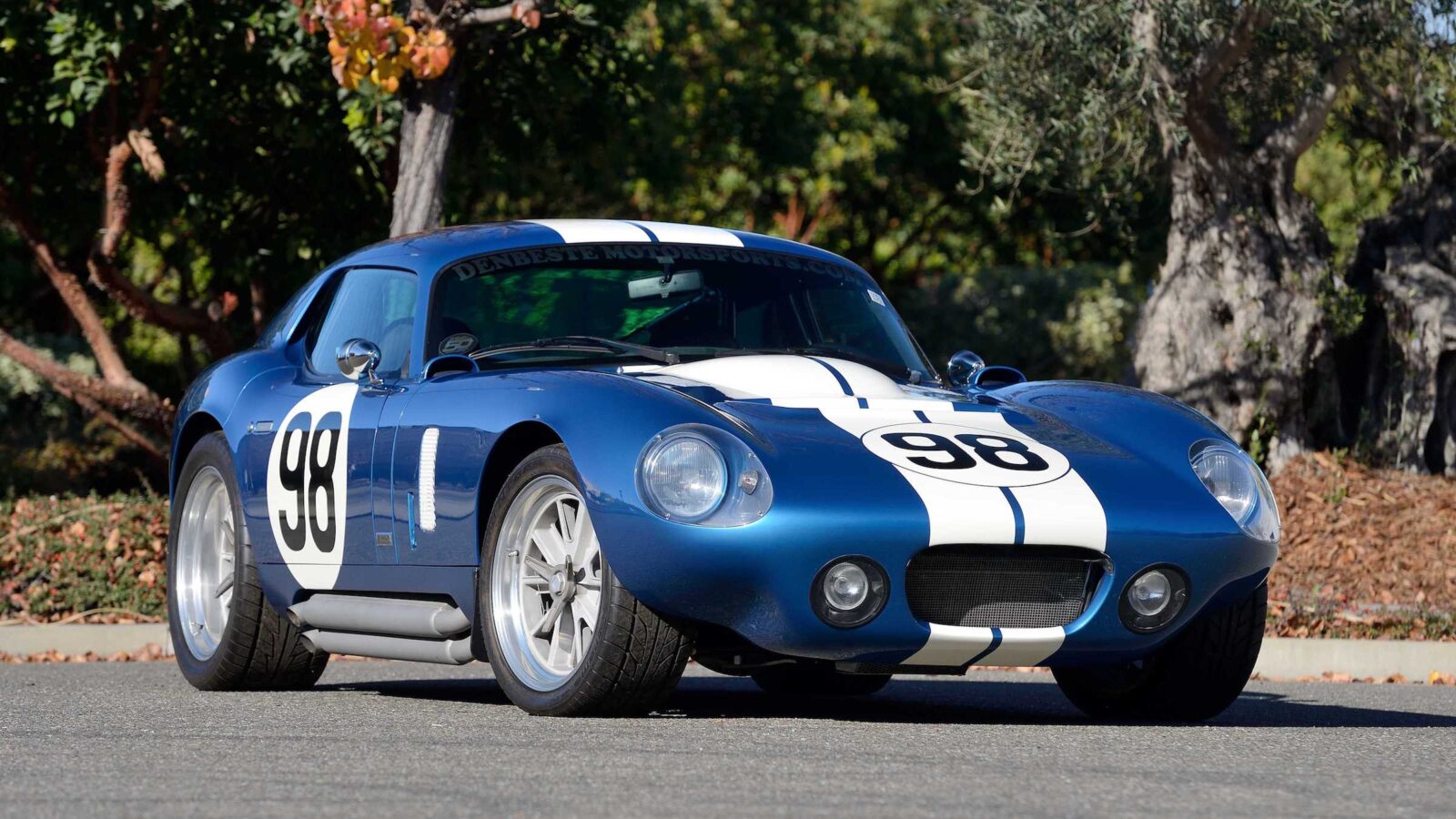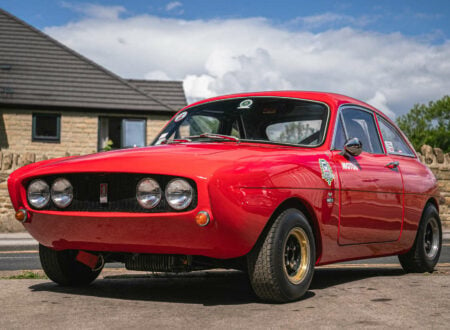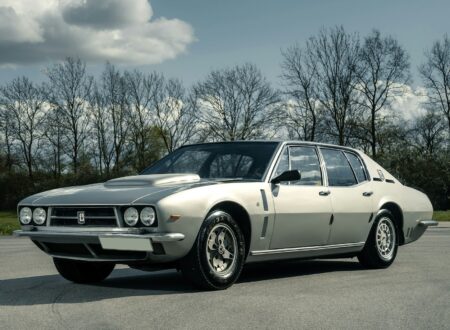The story of the Shelby Daytona Coupe became an American racing saga unlike almost any other. It was a car designed by a ragtag crew in Southern California to take on the industrial might of Ferrari, it achieved a shock second place in the GT Division III class of the 1964 World Sportscar Championship season, followed by a popular victory in the 1965 season in the same class.
The Origins of the Shelby Daytona Coupe
Carroll Shelby had won at the 1959 24 Hours of Le Mans alongside British co-driver Roy Salvadori, driving the Aston Martin DBR1. It was at this event he noticed a little British roadster called the AC Ace, which had taken a class win. Shelby realized that he could turn the Ace into a world beater if it just had more power – the kind of power you get from a hefty V8.
Once he retired from racing after the Le Mans victory (due to a heart condition), Carroll set to work creating a new British/American sports car based on the AC Ace. It was named the AC Cobra (Shelby Cobra in the USA) and it incorporated a Ford V8, with a stronger Salisbury 4HU differential, and a 4-speed transmission.
The 289 cubic inch engine produced 270+hp and the kerb weight was 2,019 lbs (916 kgs) – making for a remarkably quick package, particularly by the standards of 1962. The AC Cobra proved to be an instant success and multiple race winner, but it had one significant Achilles heel – aerodynamics.
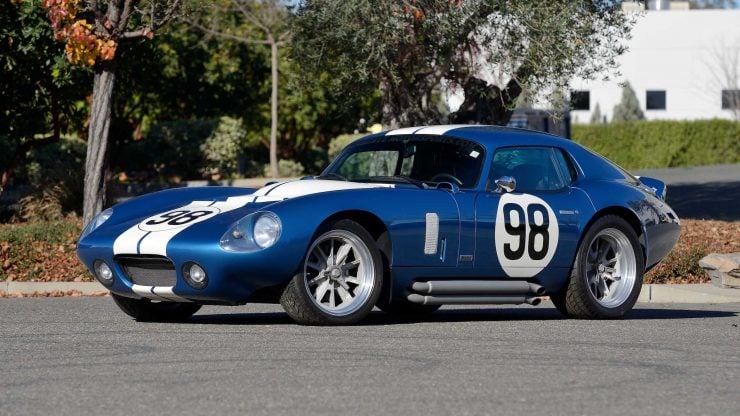
Designing the Shelby Daytona Coupe
Carroll Shelby’s target was a win at Le Mans against the Ferraris, however the Italians had one major advantage – their new 250 GTO had been designed with the aid of a wind tunnel. This gave the Ferrari a huge step up at the 24 Hours of Le Mans which is held annually at the Circuit de la Sarthe, a track with a 3 mile straight section called the Mulsanne Straight.
The new Ferrari 250 GTO could reach speeds in excess of 180 mph, whilst the AC Cobra was pushing 150+ due to significant drag, largely caused by the open top configuration.
The team at Shelby’s workshop set to work creating their own Ferrari killer. Designer Pete Brock sketched out the shape of the new car on the floor of the factory around a British AC chassis, then fabricated a simple body structure using scrap wood and gaffer tape with driver Ken Miles sitting inside to ensure the ergonomics would work.
Once this was completed, Pete cut wooden sections for the body buck, then used them as the form to hand-beat the aluminum into shape. Although it sounds bush-league, Pete knew exactly what he was doing, he had studied at the Stanford University engineering department and at the Art Center College of Design in Los Angeles.
At 19 Pete had been picked up by the General Motors design department, the youngest designer ever hired, and it was one of his designs that was chosen by Bill Mitchell to become the foundation of the Corvette Stingray.
By the time the Stingray reached production, Pete had been hired by Carroll Shelby, with whom he would run the Carroll Shelby School of High Performance Driving, and stretch his design legs by penning a number of race cars, including the Shelby Daytona Coupe.
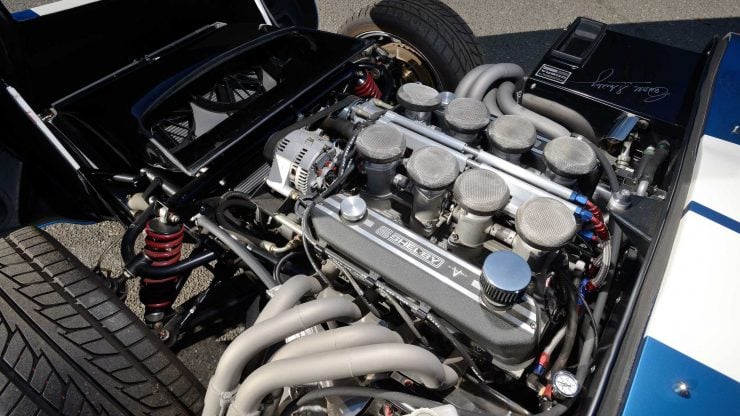
Shelby Daytona Coupe – 1965 GT Division III World Champion
Starting in 1964, the Shelby Daytona Coupe began competing in the GT Division III class of the World Sportscar Championship. It took class wins at the 12 Hours of Sebring, the 24 Hours of Le Mans, and the RAC Tourist Trophy, finishing second in the championship that year.
By 1965 the car had been dialed in, and it took convincing victories at the 24 Hours of Daytona, the 12 Hours of Sebring, the Italian Grand Prix at Monza, the Nürburgring 1000 km, and the 12 Hours of Reims, winning the championship.
Despite its win, the work wasn’t yet over for the blue and white Shelby, it was shipped to the Bonneville Salt Flats for a Goodyear tire test in November, where it would set 23 individual speed records over four days with Craig Breedlove at the wheel.
From 1966 onwards Carroll Shelby’s attention would turn to the Ford GT40 racing program, and the six original Shelby Daytona Coupes would live on as a major highlight in the annals of American racing.
The Continuation of the Shelby Daytona Coupe
50 years after the world championship win in 1965, Shelby American decided to bring the Cobra Coupe back for a very limited edition production run of official continuation cars.
They developed two distinct variations, an aluminum bodied car designed to be as close to the original as possible with an MSRP of $349,995. The other option was a car that looked externally very much the same, but had a more modern chassis, a nicely trimmed interior (with air-conditioning as an option), a lightweight fiberglass body, and a price tag of $179,995.
Both cars were supplied without engine, allowing the owner to choose their own V8. The obvious and period correct choice was the 289 cubic inch Ford V8 tuned up by Shelby American, but some cars benefitted from same upgraded power plant used in the AC Cobra – a 427 cubic inch Ford V8 capable of well over 500 hp.
These 50 official continuation cars proved to be very popular with the global enthusiast community, and many of them are now tucked away in private collections in the USA, Europe, and further afield.
The Car Shown Here – Shelby Daytona Coupe CSX9110
Car number CSX9110 shown here is likely one of the quicker examples, it’d fitted with the 427 Ford V8 tuned by Shelby to produce 560 hp and 540 ft-lbs of torque. It has the full fiberglass body, a 5-speed transmission, independent coilover suspension on all corners, an aluminum radiator, a 21 gallon stainless fuel tank, and Stewart Warner gauges.
For comfort and usability, the car is also fitted with electric windows and air conditioning, power steering, and power brakes. Under the hood the V8 was built by Shelby with 8 individual throttle bodies with high flow injectors, a high flow fuel pump, 4340 forged crankshaft and h-beam rods, forged pistons, Roush/AFR CNC-ported heads, and a hydraulic roller cam and roller rockers.
Amazingly, the car only has 174 miles on it since new, making it an excellent buy for a collector who wants a car as close to new as possible. If you’d like to read more about it or register to bid you can click here to visit the listing on Mecum.
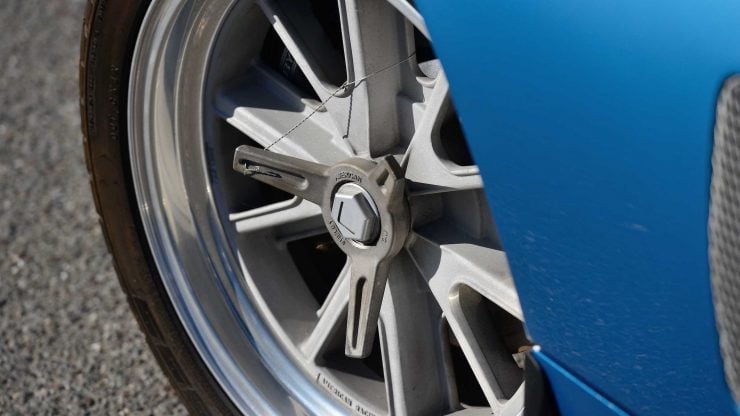
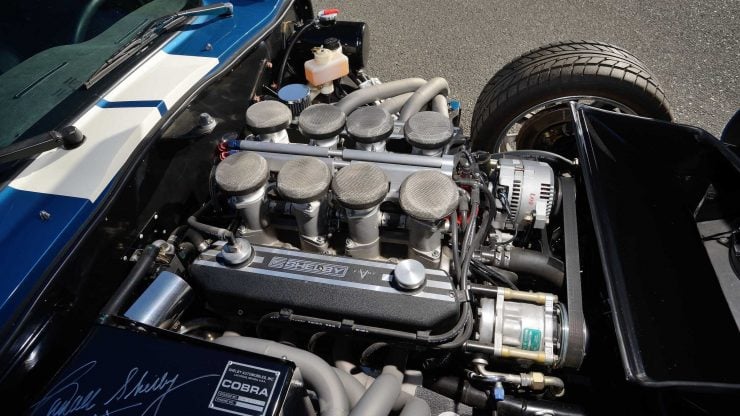
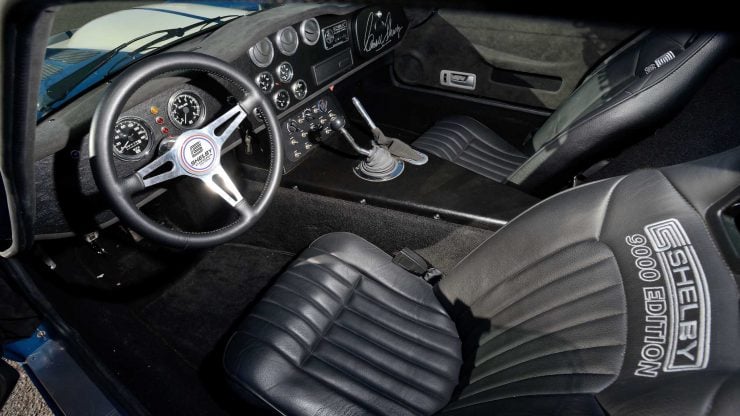
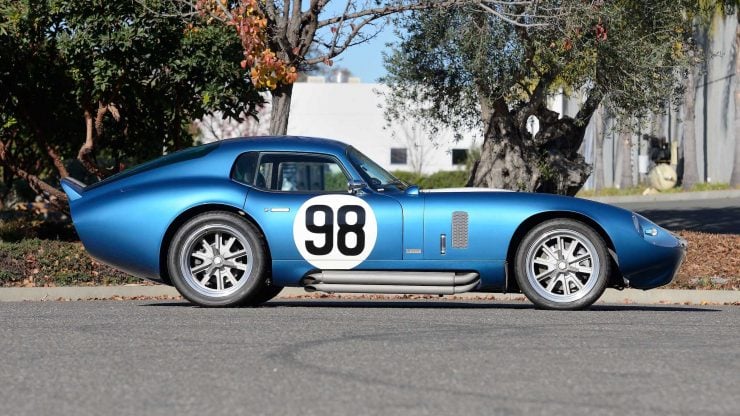
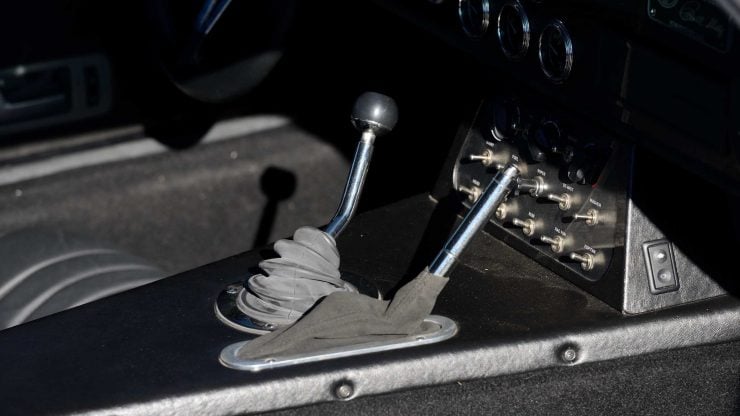
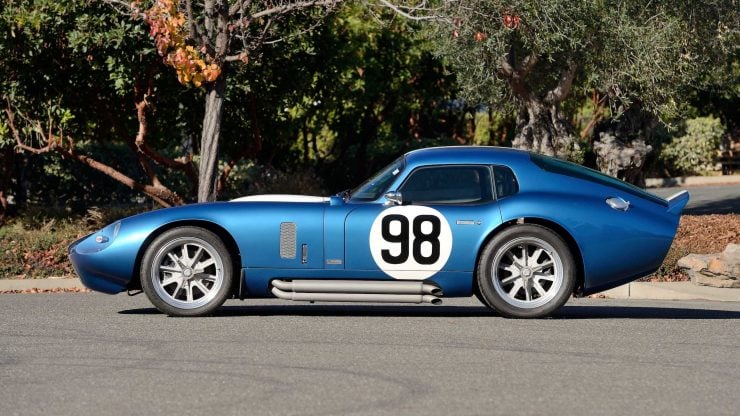
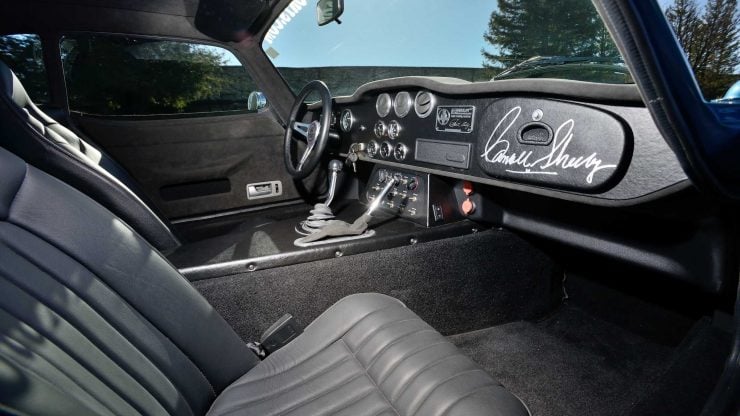
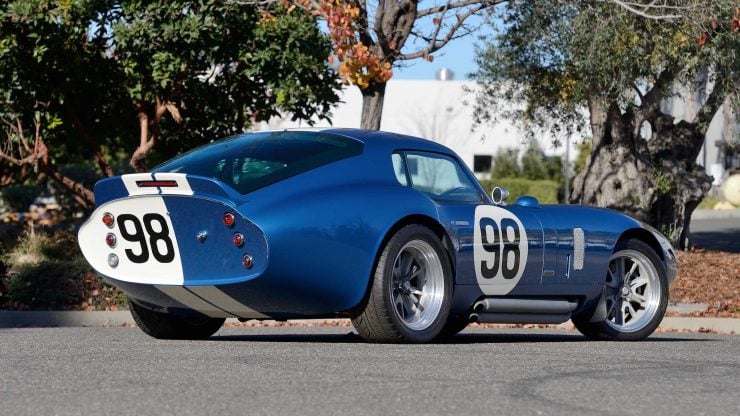
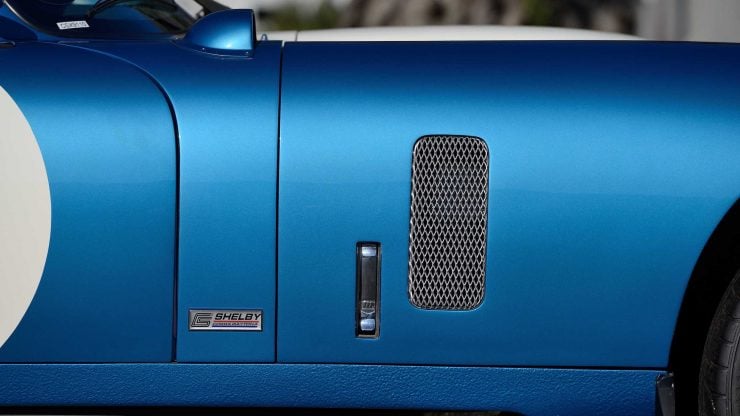
Images courtesy of Mecum

Articles that Ben has written have been covered on CNN, Popular Mechanics, Smithsonian Magazine, Road & Track Magazine, the official Pinterest blog, the official eBay Motors blog, BuzzFeed, Autoweek Magazine, Wired Magazine, Autoblog, Gear Patrol, Jalopnik, The Verge, and many more.
Silodrome was founded by Ben back in 2010, in the years since the site has grown to become a world leader in the alternative and vintage motoring sector, with well over a million monthly readers from around the world and many hundreds of thousands of followers on social media.

